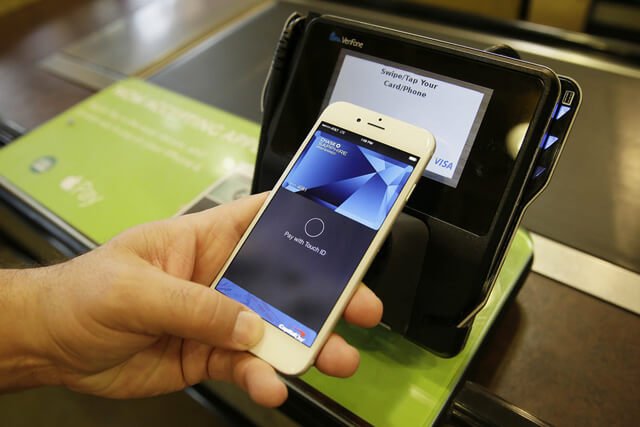Making attempts to expand payments globally, Apple Pay has run into technical challenges, low consumer take-up and resistance from banks.
Apple Pay is available in six countries and among a limited range of banks, though in recent weeks Apple has added four banks to its lone Singapore partner American Express; Australia and New Zealand Banking Group in Australia; and Canada’s five big banks.
Last year the service usage totaled $10.9 billion, the vast majority of that in the United States. According to research firm Timetric, that is less than the annual volume of transactions in Kenya, a mobile payments pioneer. Besides, its global turnover is a small amount in China, where Internet giants Alibaba and Tencent dominate the world’s biggest mobile payments market with an estimated $1 trillion worth of mobile transactions last year, according to iResearch data.
Apple Pay transactions were a fraction of the $84.5 billion in iPhone sales for the six months to March, which accounted for two-thirds of Apple’s total revenue. For example, in Australia, where Apple Pay launched a month ago, payment machines supported by one mid-sized bank reported frequent failures.
Running into a slowing smartphone business, the company has taken on the payments market hoping to add ways to make its devices more appealing, and more revenue streams. Apple takes a cut of up to 15 cents in the United States on every $100 spent.
While it has long mastered the supply chain for its mobile devices, the payments ecosystem has proved harder to control, and banks in other countries have reportedly negotiated lower transaction fees, contributing to its slow global roll-out.
Apple nearly doubled its R&D spending to more than $8 billion in 2013-15 as it pushed out a wave of new products including Apple Watch and Apple Pay, as well as upgrades to existing hardware devices and new services.
Apple has leveraged its huge U.S. user base to push Apple Pay, but has met resistance in Australia, Britain and Canada where banks are building their own products.
In Britain, for example, $14 billion was spent via contactless cards last year, according to Windsor Holden, a Juniper Research analyst. That makes it harder to persuade people to take the extra step on their smartphone for the same checkout convenience.
In Australia, where more than 60 percent of all card transactions are through contactless cards, reception has also been muted. A spokesman for one large retailer said he had seen “very little uptake of the payment option” in his sector.
Three months after the China launch, users on online forums complained that using Apple Pay, even at popular fast-food outlets, was not as seamless as local services such as WeChat, Tencent’s messaging and mobile commerce phenomenon.
Nonetheless, Apple’s approach has aroused development in several markets where the mobile payments industry had previously not taken hold – giving it the jump on rivals Google’s Android Pay and Samsung Pay.
